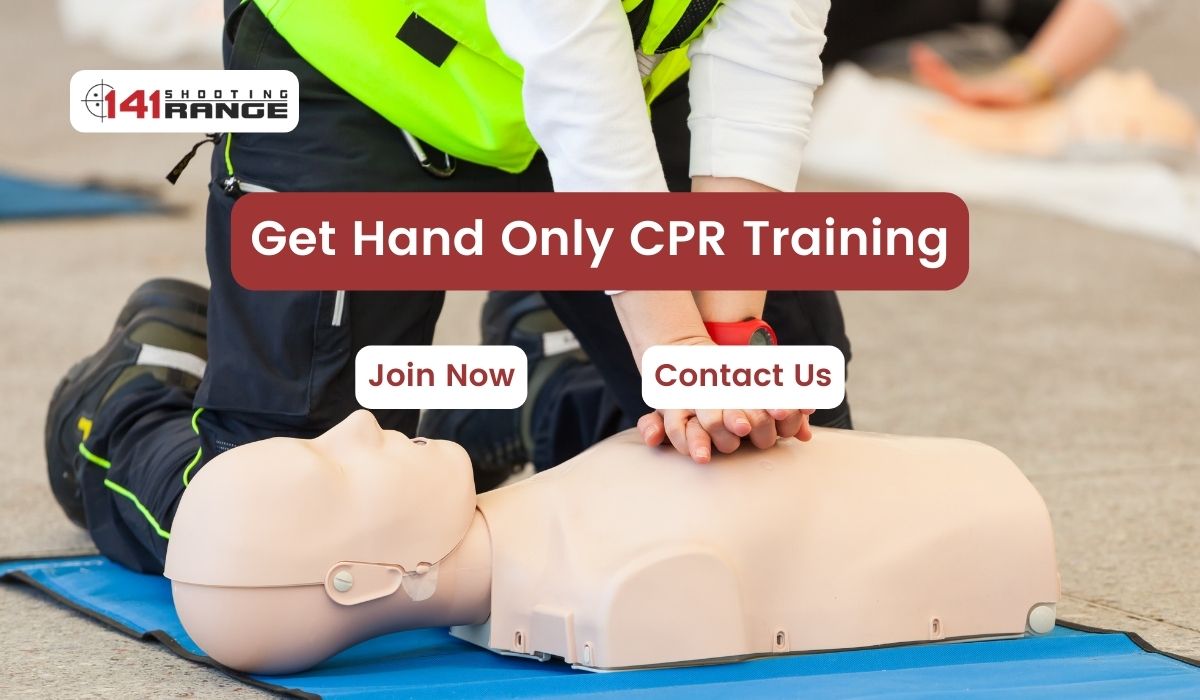Everybody should know how to do cardiopulmonary resuscitation (CPR). Before the arrival of medical personnel, the timely and efficient performance of cardiopulmonary resuscitation (CPR) can be life-saving.
Hands-Only CPR is a less complicated and more accessible method of cardiopulmonary resuscitation. It emphasizes chest compressions without the need for mouth-to-mouth breaths. Here, we’ll show you how to do cardiopulmonary resuscitation (CPR) with only your hands.
Here are some steps that one has to follow when they have to perform CPR:
1) Analyze the situation:
Make sure that you and the victim are both safe before taking action. Look for potential hazards like traffic, fire, or dangerous surroundings. Assess the person’s responsiveness if it is safe to do so. Different situations may present electrical hazards, chemical spills, structural instability, or weapons. Ensure the safety of both yourself and the victim by carefully assessing the surroundings.
2) Ensure responsiveness:
Tap the person gently and shout, “Are you all right?” Call emergency services or ask someone nearby for help if no response occurs. Emergencies require speed. Emergency services are crucial when there is no response because they can provide immediate medical care. Assist in directing appropriate help and guide how to administer essential life support. This can significantly increase the chances of the victim’s survival and minimize further harm.
3) Victim Position:
Lie the person down on a firm surface with their back to the ground. Tilt their head slightly and check their breathing to ensure their airway is clear. Start Hands-Only CPR if the person does not breathe or breathes abnormally. When a person has potential spinal injuries, moving them to a firm surface can be risky. It is best to keep the person in their current position if there is any suspicion of a spinal injury.
4) Interlock your hands:
Place your hands directly above your shoulders while kneeling beside the victim. Grasp the person’s chest with your palms down and interlock your fingers. The correct CPR hand position is directly above the victim’s shoulders, with the palms down and fingers interlocked. Maintaining blood flow and oxygenation during cardiac arrest requires effective chest compressions.
5) Performing compressions:
Push hard and fast on your chest with straight arms and upper body weight. Compress at 100-120 compressions per minute and aim for a depth of at least 2 inches (5 centimetres). Between compressions, allow the chest to recoil fully. Chest compressions are most effective when you push hard and fast because they help generate enough blood flow to vital organs. Oxygenated blood is circulated throughout their bodies by rapidly and forcefully compressing the victim, increasing their chances of survival.
6) Compress further:
If the person is alive or professional help arrives, continue chest compressions. Hands-Only CPR requires consistency and depth for it to be effective. Effective chest compressions significantly increase cardiopulmonary arrest survival rates. You can generate enough blood flow to vital organs by pushing hard and fast on the chest with straight arms. This rapid and forceful compression makes oxygen to the brain and other organs possible.
7) Keep an eye on the victim:
Check for signs of life regularly, such as breathing and movement. Until professional help arrives, stop chest compressions and keep the person comfortable. When a person is waiting for professional assistance, it is important to keep them comfortable. Maintain proper alignment by lying them flat and supporting their head and neck with a towel or pillow. Assure that help is on the way by covering them with a blanket if needed.
8) Preparation for AED:
You should use an automated external defibrillator (AED) as soon as possible if one is available. Apply the electrodes to the patient’s chest according to the device’s voice instructions. By the AED’s instructions, resume chest compressions.
Conclusion:
You can act as an immediate first responder in critical situations if you master Hands-Only CPR. During cardiac emergencies, this simple yet effective technique can save lives. As soon as you initiate chest compressions, you become a crucial link in the chain of survival. Bystanders can contribute to preserving life until professional help arrives with Hands-Only CPR because it is so simple. Following these steps can profoundly impact when it matters most – turning ordinary people into potential lifesavers.
Frequently Asked Questions:
CPR that relies exclusively on hand compressions, without oral breathing, is known as Hands-Only CPR.
Whenever someone is unresponsive and not breathing, typically requires CPR, perform Hands-Only CPR.
Place your hands, palms down, on the person’s chest, interlocking your fingers.
To achieve optimal results, compress at 100-120 compressions per minute.
Performing Hands-Only CPR is relatively easy for everyone. It is easy and quick to learn a skill like this.
In the absence of professional help or signs of life, continue chest compressions for as long as possible.
While continuing chest compressions, use an automated external defibrillator (AED) if available.









